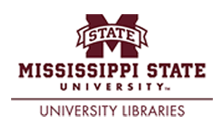Influence of seed-applied biostimulants on soybean germination and early seedling growth under low and high temperature stress
ORCID
Bheemanahalli: https://orcid.org/0000-0002-9325-4901
MSU Affiliation
College of Agriculture and Life Sciences; Department of Plant and Soil Sciences; Delta Research and Extension Center
Creation Date
2025-11-19
Abstract
Biostimulants are environment-friendly agricultural inputs that can improve plant health and yield potential under environmental stressors. Soybeans subjected to extreme temperatures during the growing seasons impacts plant health and performance. Uniform emergence and vigorous seedling establishment are the two traits during the early season that directly correlate with the final yield and are sensitive to abiotic stress. This study tested the effectiveness of seed-applied biostimulants in improving seed germination and emergence traits under different temperatures, low (15 °C, LT), optimum (25 °C, OT), and high (35 °C, HT), using three phenotyping methods such as the paper roll, growth pouch, and soil-based pot culture. Germination, emergence, and seedling growth were significantly accelerated under OT and HT compared to LT in both biostimulant-treated and untreated seeds. While seeds treated with biostimulants exhibited minor differences in germination, emergence, and growth traits under LT and HT compared to the OT. In the soil-based pot culture experiment, humic and fulvic acid-containing treatments extended the time to 50% emergence under LT. This delay was associated with a 13% increase in seedling biomass. A bacillus containing biostimulant improved seedling vigor by 7% under LT compared to untreated check. Notably, biostimulants containing bacterial strains, fulvic acid, and humic acid were found to have a role in reducing time to germination or emergence and enhancing seedling growth. However, the results obtained from different phenotyping methods were inconsistent, suggesting that the effects of biostimulants on germination and growth parameters may be more targeted rather than broad-spectrum. Future research is necessary to optimize application rates and fully explore their potential to mitigate the effects of stressors during the growing season.
Publication Date
3-1-2025
Publication Title
Plant Physiology Reports
Publisher
Springer
First Page
32
Last Page
44
Creative Commons License

This work is licensed under a Creative Commons Attribution 4.0 International License.
Recommended Citation
Sivarathri, B.S., Kodadinne Narayana, N., Bryant, C.J. et al. Influence of seed-applied biostimulants on soybean germination and early seedling growth under low and high temperature stress. Plant Physiol. Rep. 30, 32–44 (2025). https://doi.org/10.1007/s40502-024-00834-z


